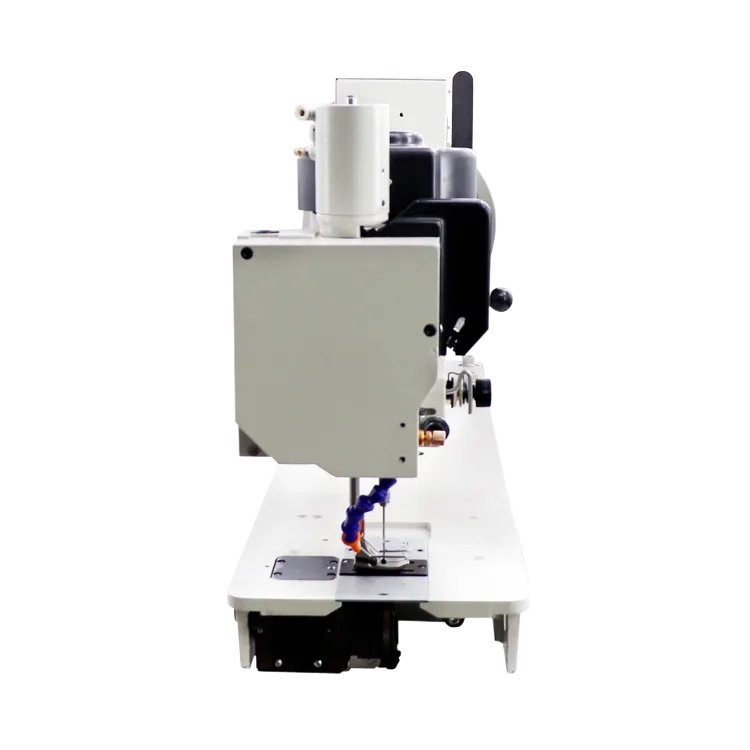Understanding Lock Stitch Functionality on Sewing Machines for Seamless and Durable Stitches
Understanding the Lock Stitch in Sewing Machines
When it comes to sewing, one of the most fundamental techniques employed by sewing machines is the lock stitch. This method is integral to creating strong, reliable seams in a wide range of textiles. Whether you are a novice in the world of sewing or a seasoned tailor, grasping the concept of a lock stitch can significantly enhance your sewing skills and understanding of machine operation.
What is a Lock Stitch?
In basic terms, a lock stitch is a type of stitch created by interlocking two threads the upper thread (needle thread) and the lower thread (bobbin thread). This stitch type is named “lock stitch” because the interlocking action keeps the threads locked in place, which provides strength and stability to the seam. The lock stitch is commonly produced by home sewing machines and industrial sewing machines, making it one of the most widely used stitch types in various sewing projects.
How Does it Work?
The mechanism behind a lock stitch is quite fascinating. When you engage the sewing machine, the needle thread passes through the fabric. As the needle descends, the bobbin case rotates and the bobbin thread is pulled up through a small opening. This interlocking action occurs as the needle rises again, creating a tight, locked seam. The configuration of these threads and their interaction with the fabric results in a stitch that is flat on one side (the top side where the needle is) and slightly bulkier on the other side (the bobbin side).
For optimal performance, it's essential to ensure that both threads are properly tensioned. Incorrect tension can lead to various issues, such as thread bunching, skipped stitches, or uneven seams. Therefore, understanding how to adjust the tension on your sewing machine is crucial for achieving perfect lock stitches.
Applications of Lock Stitch
what is a lock stitch on a sewing machine

Lock stitches are ideal for various sewing applications, particularly when strong seams are required. You will find this stitch type commonly used in garment construction, quilting, and home décor projects. It is particularly favored for projects involving woven fabrics, as it prevents unraveling and provides durability.
Moreover, the lock stitch serves different purposes according to the types of fabrics being sewn. For example, when sewing lightweight fabrics, a tighter lock stitch is often preferred to avoid puckering. Conversely, for thicker materials, adjustments may be made to accommodate the bulk and ensure a smooth stitch formation.
Advantages of Using Lock Stitches
There are several advantages associated with lock stitches. First and foremost is the strength of the seam, which makes it less likely to fray or come apart over time. Additionally, lock stitches produce a neat, professional appearance, making them suitable for visible seams in finished garments.
Another significant benefit is versatility; lock stitches can be used for both straight and decorative stitches, allowing for creativity in sewing projects. Lastly, sewing machines designed to create lock stitches are typically user-friendly, making them accessible for beginners while also offering advanced features for experienced sewists.
Conclusion
In summary, the lock stitch plays a crucial role in the world of sewing. Its unique interlocking method not only creates durable seams but also enables versatility in various applications. Understanding the mechanics and advantages of lock stitches can significantly enhance your sewing experience, leading to better results and more satisfying creative endeavors. As you delve deeper into the art of sewing, mastering the lock stitch will undoubtedly be a key component of your success.
-
Leather Sewing Machine: The Industrial Standard for Tough MaterialsNewsJul.18,2025
-
Sail Making Machine: Heavy-Duty Stitching for Industrial and Marine NeedsNewsJul.18,2025
-
Sling Sewing Machine: The Backbone of Heavy-Duty FabricationNewsJul.18,2025
-
Leather Sewing Machine: Precision for Heavy-Duty StitchingNewsJul.18,2025
-
Big Bag Sewing Machine: Powering the Future of Bulk PackagingNewsJul.18,2025
-
FIBC Sewing Machine: Essential Equipment for Bulk Bag ProductionNewsJul.18,2025
-
Heavy Duty Leather Sewing Machine: A Must-Have for Professional LeatherworkNewsMay.28,2025





























